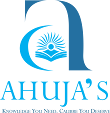Basic Pharmacology For Nurses and Allied Health Professions by Ashutosh kar
ASHUTOSH KAR
Formerly
Professor, School of Pharmacy, Addis Ababa University,
Addis Ababa (Ethiopia)
Dean, Chairman & Professor, Faculty of Pharmaceutical Sciences,
Guru Jambheshwar University, Hissar (India)
Professor, School of Pharmacy, Al Arab Medical University,
Benghazi (Libya)
Professor, College of Pharmacy, University of Delhi,
Delhi (India)
Professor & Head, Department of Pharmaceutical Chemistry,
Faculty of Pharmaceutical Sciences, University of Nigeria,
Nsukka (Nigeria)
PREFACE:-Nursing, a noble profession, is regarded undoubtedly a fast-expanding field for being in the greatest
demand across the globe. The Super Speciality Hospitals and General Hospitals (both in Government
and Private sectors) and other hospitals located in rural areas (i.e., Primary Healthcare Centres)
urgently require the services of ‘Nurses’. With a growing increase in the overall percentage of elderly
populations serious ailments, male/female outdoor patients, pre-natal/post-natal care centres, children/
infant units and trauma/emergency centres–the actual demand for nursing profession will always be
increasing progressively. Besides, the expectations from ailing patients have also increased substantially.
Therefore, nurses must possess:
· Adequate knowledge of the latest drugs,
· Sufficient expertise in the professional and drug-poisoning, and
· Management of drug-drug interactions and drug-poisoning.
Basic Pharmacology for Nurses and Allied Health Professionns has been carefully developed as
per the Indian Nursing Council (INC) Syllabus. The textbook essentially comprises eleven sections
as given under:
Section 1 : Introduction to Pharmacology
Section 2 : Chemotherapy
Section 3 : Pharmacology of Commonly Used Antiseptics, Disinfectants and Insecticides
Section 4 : Drugs Acting on Gastrointestinal (GI) System
Section 5 : Drugs Used in Respiratory System
Section 6 : Drugs Used in Urinary System
Section 7 : Miscellaneous Topics
Section 8 : Drugs Acting on Nervous System
Section 9 : Cardiovascular Drugs
Section 10 : Hormones
Section 11 : Complementary, and Alternative Systems of Medicine:
Each chapter commences with a brief introduction, classification, important drugs,
pharmacologic actions, mechanism of action, pharmacokinetics, adverse effects, therapeutic uses
and contraindications/cautions, wherever necessary.
Due care has been taken to convince the student through diagrams, tables and graphics to render the
subject matter comprehensible to the Undergraduate Students of Nursing throughout the Indian
Universities. The present text is also suitable for candidates aspiring for the Allied Professional Courses
viz., Paramedical Courses, Medical Laboratory, Technician Courses and the like.
The text book concludes with ‘Appendices’ dealing with Weights and Measures for the benefit of
its readers.
Each section has been provided with sufficient useful and intelligent ‘Multi-Choice Questions
(MCQs)’ at its end to enable the students prepare for competitive examinations.
The authors earnestly hope that the textbook may prove to be a handy companion to the bright and
aspiring students of Nursing and Allied Health Professionns in India and abroad.
We would like to place the on record excellent expertise, cooperation and unstinted help rendered
kindly by Shri Umesh Ahuja, MD, Ahuja Publishing House, New Delhi, and his energetic production
team in bringing out the textbook in a record time-frame.
January, 2012 Ashutosh Kar
SC Mehta
Follow Us:-
Our Website:- Ahuja Book Company
Youtube:- Ahuja Book Company
Twitter:- Ahuja Book Company
Facebook Page:- Ahuja Book Company
Blog Ahuja Book Company
If you require any further information, feel free to contact us
ahujabooksdel@gmail.com, info@ahujabooks.com




0 Comments:
Post a Comment
Subscribe to Post Comments [Atom]
<< Home